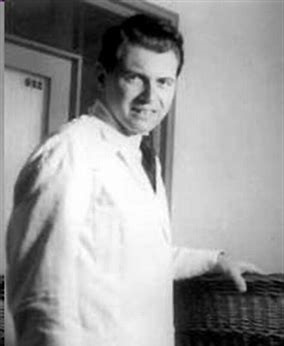Dr. Mengele, the “Angel of Death”
Dr. Mengele, the “Angel of Death” who was notorious for conducting horrific medical experiments, particularly on twins. With a slight motion of his index finger, he decided who would live and who would die.
![]() https://en.wikipedia.org/wiki/Josef_Mengele
https://en.wikipedia.org/wiki/Josef_Mengele

Josef Mengele (German: [ˈjoːzɛf ˈmɛŋələ] ⓘ; 16 March 1911 – 7 February 1979) was a Nazi German Schutzstaffel (SS) officer and physician during World War II at the Russian front and then at Auschwitz during the Holocaust, where he was nicknamed the "Angel of Death" (German: Todesengel). He performed deadly experiments on prisoners at the Auschwitz II-Birkenau concentration camp, where he was a member of the team of doctors who selected victims to be murdered in the gas chambers.
Josef Mengele | |
|---|---|
 Mengele at Solahütte in 1944 | |
| Birth name | Josef Mengele |
| Nickname(s) |
|
| Born | 16 March 1911 Günzburg, German Empire |
| Died | 7 February 1979 (aged 67) Bertioga, São Paulo, Brazil |
| Cause of death | Drowning |
| Allegiance | Nazi Germany |
| Service | Schutzstaffel |
| Years of service | 1938–1945 |
| Rank | SS-Hauptsturmführer (captain) |
| Service number |
|
| Awards |
|
| Alma mater |
|
| Spouse(s) | Irene Schönbein
(m. 1939; div. 1954)Martha Mengele (m. 1958) |
| Children | Rolf Mengele |
| Signature | |
Before the war, Mengele received doctorates in anthropology and medicine, and began a career as a researcher. He joined the Nazi Party in 1937 and the SS in 1938. He was assigned as a battalion medical officer at the start of World War II, then transferred to the Nazi concentration camps service in early 1943. He was assigned to Auschwitz, where he saw the opportunity to conduct genetic research on human subjects. His experiments focused primarily on twins, with no regard for the health or safety of the victims. With Red Army troops sweeping through German-occupied Poland, Mengele was transferred 280 kilometres (170 miles) away from Auschwitz to the Gross-Rosen concentration camp on 17 January 1945, ten days before the arrival of the Soviet forces at Auschwitz.
After the war, Mengele fled to Argentina in July 1949, assisted by a network of former SS members. He initially lived in and around Buenos Aires, but fled to Paraguay in 1959 and later Brazil in 1960, all while being sought by West Germany, Israel, and Nazi hunters such as Simon Wiesenthal, who wanted to bring him to trial. Mengele eluded capture in spite of extradition requests by the West German government and clandestine operations by the Israeli intelligence agency Mossad. He drowned in 1979 after suffering a stroke while swimming off the coast of Bertioga, and was buried under the false name of Wolfgang Gerhard. His remains were disinterred and positively identified by forensic examination in 1985.

